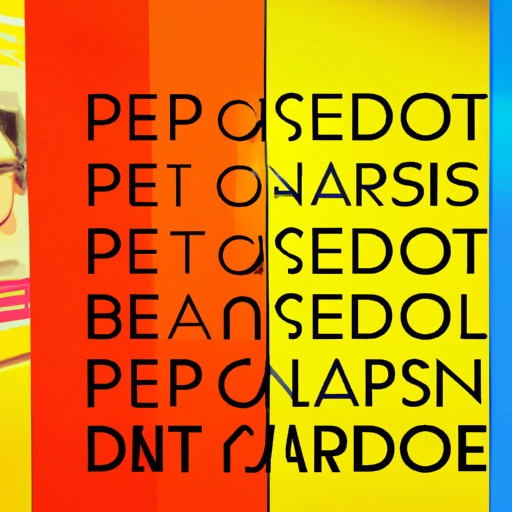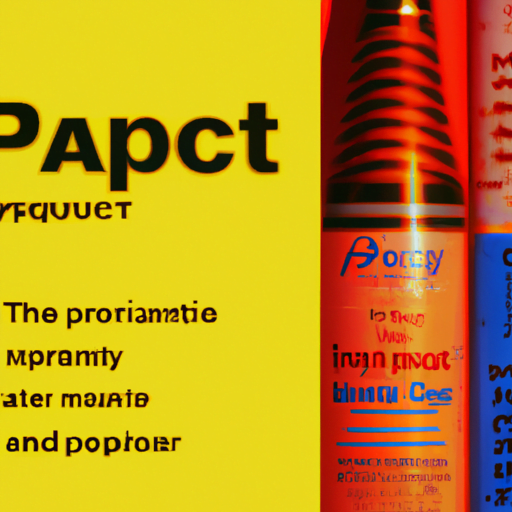
-
Table of Contents
The Impact of Typography in Packaging Copywriting

When it comes to packaging, the design and visual appeal play a crucial role in attracting consumers. However, one often overlooked aspect of packaging design is typography. Typography refers to the style, arrangement, and appearance of text, and it can have a significant impact on how consumers perceive a product. In this article, we will explore the importance of typography in packaging copywriting and how it can influence consumer behavior.
The Power of Typography
Typography is more than just choosing a font. It is a powerful tool that can evoke emotions, convey messages, and create a brand identity. The right typography can make a product stand out on the shelf, communicate its value, and ultimately drive sales. Here are some key ways typography impacts packaging copywriting:
- Brand Identity: Typography plays a crucial role in establishing a brand’s identity. The font choice, style, and consistency across different packaging designs help consumers recognize and connect with a brand. For example, the bold and playful typography used by Coca-Cola has become synonymous with their brand image.
- Readability: Packaging copy needs to be easily readable to convey important information to consumers. The right typography ensures that the text is legible, even at a glance. It should consider factors such as font size, spacing, and contrast with the background color.
- Emotional Appeal: Typography can evoke emotions and create a specific mood. Different fonts have different personalities, and the right choice can align with the product’s intended emotional appeal. For instance, a handwritten script font may convey a sense of warmth and authenticity, while a bold sans-serif font can create a modern and sleek impression.
- Information Hierarchy: Packaging often contains various types of information, such as product name, ingredients, and instructions. Typography helps establish a hierarchy, guiding consumers’ attention to the most important details. By using different font sizes, weights, and styles, packaging copy can effectively communicate the essential information.
Case Studies and Examples
Let’s explore some real-world examples of how typography in packaging copywriting has made a significant impact:
1. Apple
Apple is known for its minimalist and sleek packaging design. The typography used on their product packaging is clean, simple, and consistent with their overall brand image. The use of a sans-serif font with generous spacing creates a sense of elegance and sophistication. This typography choice aligns with Apple’s brand identity and reinforces the perception of their products as high-quality and premium.
2. Innocent Drinks
Innocent Drinks, a UK-based smoothie company, uses playful and handwritten typography on their packaging. The use of a casual script font conveys a sense of authenticity and friendliness. This typography choice aligns with their brand values of being natural, approachable, and fun. It helps create an emotional connection with consumers and stands out on the shelf amidst competitors.
3. Coca-Cola
Coca-Cola’s typography is instantly recognizable and has become an integral part of their brand identity. The use of a unique script font with a distinct red color creates a sense of nostalgia and tradition. This typography choice has remained consistent for decades, reinforcing the brand’s heritage and evoking positive emotions associated with the product.
The Role of Typography in Consumer Behavior
Typography in packaging copywriting can significantly influence consumer behavior. Here are some ways it impacts consumers’ perception and purchasing decisions:
- Attention and Recognition: Eye-catching typography can grab consumers’ attention and make a product stand out on the shelf. When typography is consistent across different products within a brand, it helps consumers recognize and associate the packaging with a particular brand.
- Perceived Value: Typography can influence consumers’ perception of a product’s value. A well-designed and sophisticated typography choice can make a product appear more premium and desirable. On the other hand, poor typography can give the impression of a low-quality or generic product.
- Trust and Credibility: Typography that is clear, professional, and easy to read instills trust in consumers. It conveys a sense of credibility and professionalism, making consumers more likely to trust the brand and its products.
- Emotional Connection: Typography can evoke emotions and create a connection with consumers. The right choice of font can align with the product’s intended emotional appeal, whether it’s a sense of excitement, comfort, or trust. This emotional connection can influence consumers’ purchasing decisions.
Conclusion
Typography plays a crucial role in packaging copywriting. It goes beyond choosing a font and encompasses the style, arrangement, and appearance of text. The right typography can establish a brand’s identity, enhance readability, evoke emotions, and guide consumers’ attention to essential information. Real-world examples from brands like Apple, Innocent Drinks, and Coca-Cola demonstrate the impact of typography on packaging design.
When considering packaging design, it is essential to carefully select typography that aligns with the brand’s identity and intended emotional appeal. By understanding the power of typography and its influence on consumer behavior, brands can create packaging that not only attracts attention but also communicates the value and quality of their products.
